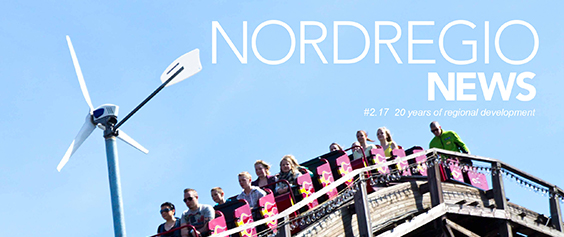Fully aware of the development paths and the latest trends across the Nordic Region, Nordregio leads the way in mapping. Nordregio specialises in comparative statistical analysis of socio-economic indicators in three primary domains: demography, labour force and the economy. Demography encompasses data on general population structure, natural population change and net migration. Labour force statistics include data on the number of employed, unemployed and economically active persons, distinguished by both gender and age group, as well as data on educational attainment. In relation to the economy, gross regional product, R&D investments, bankruptcies and overnight stays are key regional indicators.
A large part of Nordregio’s work in data gathering and analysis focuses on harmonising geodata published by national statistical institutes and making them comparable between municipalities and regions in the Nordic countries and beyond. Data gathering is the first stage in the mapping process and Nordregio is experienced in ensuring compatibility between multiple sources of data and developing indicators from these. The resultant harmonised thematic maps help regional planners to identify similarities, differences, threats and positive development paths across the Nordic regions. Visualisation of the geodata is achieved using two main cartographic techniques, namely traditional static maps and the more recently launched online web-mapping tool NordMap.

Map of the Öresund region showing the proportion of people aged 30–34 with higher education.
From data and static maps to an online mapping tool
Since the establishment of Nordregio in 1997, static maps have been the main means of illustrating and representing socio-economic indicators for the entire Nordic Region. These static maps are characterised by a fixed layout that includes all municipalities and regions of the Nordic Region. The number and boundaries of these change with each administrative reform. For example, in 1997, there were about 1,600 municipalities, but just 1,211 in 2017 (NB: sýsla for the Faroe Islands, corresponding to a regional level, instead of municipalities for comparison purposes). These changes require annual adjustments in Nordregio’s database by adapting the data to the current administrative context. Since 2015, Nordregio has complemented this traditional approach with NordMap, which gives users the opportunity to generate their own maps of the Nordic Region. First developed as an interactive monitoring tool for welfare and demography in the Nordic Region, NordMap now accommodates additional sets of indicators and has enhanced usability. This interactive tool has its own website (www.nordmap.se), where anyone can produce a map highlighting a particular socio-economic indicator throughout the Nordic Region. NordMap offers an engaging, interactive user experience, thereby making our spatial data and research results more accessible and policy relevant. It includes a user-friendly, minimalist and responsive design that is accessible through many types of viewing devices. Furthermore, among other features, the tool allows the user to see changes over time, and classify municipalities and regions according to their value on the selected indicator. Another added value of NordMap is the opportunity to create, save and share a map with harmonised data of a chosen section of the Nordic Region. For instance, it is possible to create a map of the Öresund region and its surroundings by zooming in to this specific area. As an example, the map below shows the proportion of people aged 30–34 with higher education in the region. In creating such a map, the user can be confident that it is presenting harmonised data, that is, the definition of the indicator shown on the map is the same on both sides of the Öresund strait and is for the same year. NordMap is constantly being updated on the basis of user experience and feedback, and will provide showcase maps for the State of the Nordic Region 2018 report to be launched in February 2018.
This article is part of Nordregio News #2. 2017, read the entire issue here.


